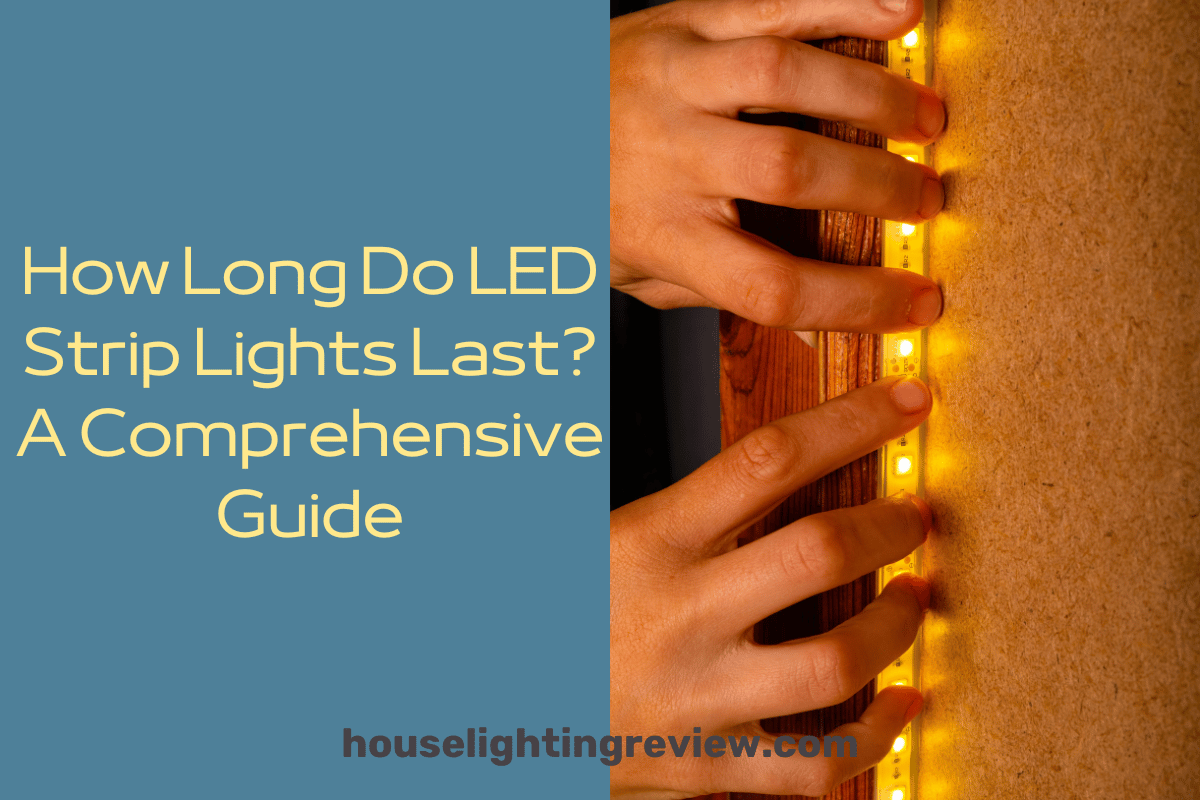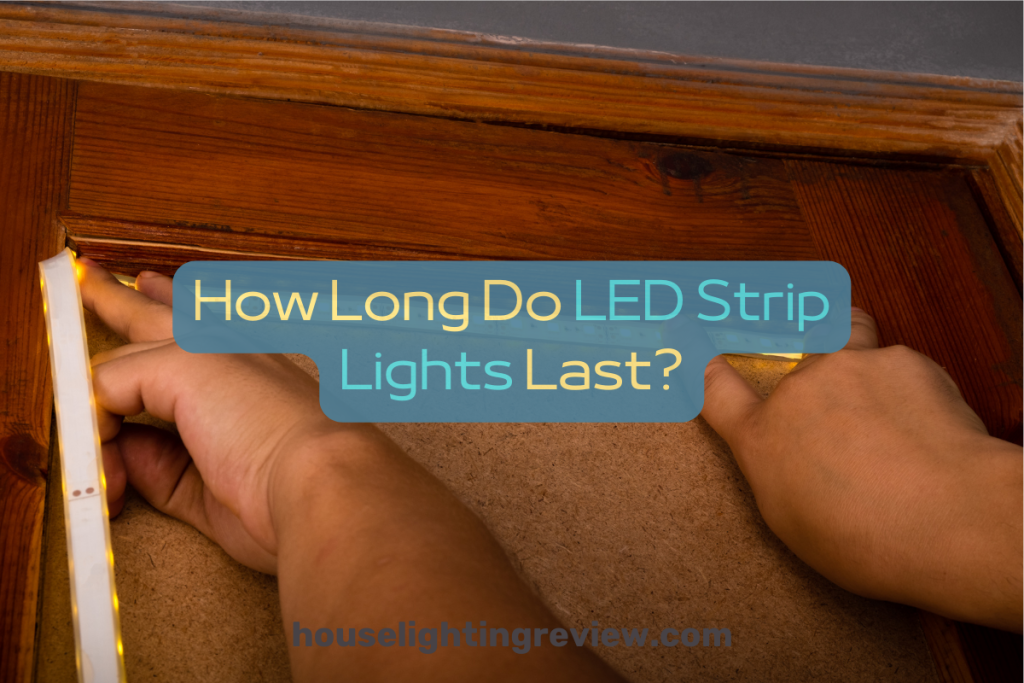
LED strip lights are an incredible innovation in lighting design, offering versatility, energy efficiency, and long life spans. However, their longevity can be influenced by various factors such as installation, usage, and environmental conditions.
So, how long do LED strip lights last and how do you make the most of your LED strip lights to ensure they last as long as possible? Let’s delve into the world of LED strip light longevity and explore the key factors that can maximize their lifespan.
Key Takeaways
- LED strip lights have an industry-standard lifespan of approximately 50,000 hours or 4-6 years.
- Quality components and temperature management are essential for optimal performance and longevity.
- Proper installation techniques, regular maintenance & inspection, environmental considerations & usage patterns can help to maximize the LED Strip Lights’ lifespan.
How long do LED strip lights last? The Basics
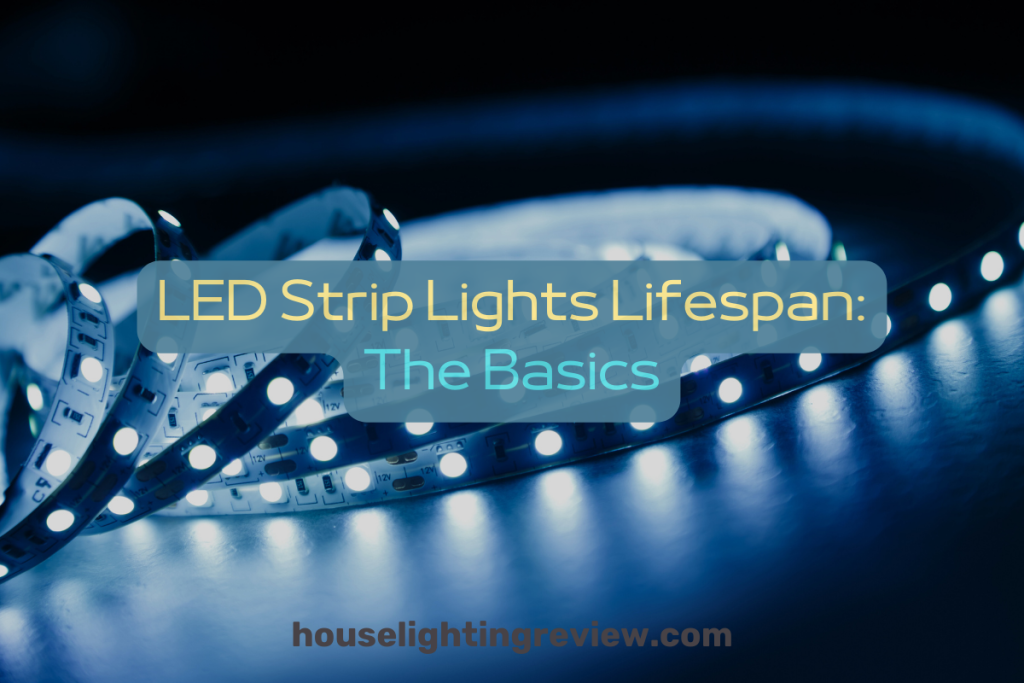
LED strip lights, also known as light strips, are known for their impressive industry-standard lifespan of approximately 50,000 hours or 4-6 years. This remarkable longevity surpasses traditional light bulbs, such as incandescent light bulbs and fluorescent bulbs, by a significant margin. However, achieving this lifespan depends on various factors, including:
- The quality of components
- Installation techniques
- Power supply
- Environmental conditions
Comprehending the L70 metric is fundamental in determining the potential lifespan of LED strip lights. The L70 metric refers to the point at which LED lights lose 30% of their original brightness, indicating that they have reached the end of their usable life.
In other words, when an LED light bulb produces only 70% of its initial lumens, it is considered to have reached the end of its operational life according to the L70 metric and in a little while you will have to remove LED lights .
L70 Metric and LED Brightness
The L70 metric serves as a vital gauge of longevity for LED lights, inclusive of LED strip lights and led bulb. This metric is based on the TM-21 algorithm, which collects data from sample tests and calculates the lifetime mark for LED light bulbs as an alternative to the time-consuming LM-80 test methodology.
The LM-80 test methodology is the primary standard for evaluating the longevity of LED strip lights, which have a longer lifespan than incandescent bulbs.
A close correlation between brightness and longevity tends to extend the lifespan of LED strip lights. As LEDs age, their brightness diminishes, and when they reach the L70 metric, they have reached the end of their operational life.
Hence, factors such as maintaining optimal brightness levels, along with ensuring proper power supply and voltage, are critical in extending the lifespan of LED strip lights.
Factors Affecting Lifespan
Numerous elements can affect the lifespan of LED strip lights, including:
- The quality of components, such as diodes, resistors, and FPCBs
- Installation techniques, including ensuring the correct voltage, using the correct power supply, and avoiding excessive bending
- Power supply
- Environmental conditions
Proper consideration and care for these factors are crucial for extending the life of LED strip lights.
Environmental conditions can significantly impact LED strip light lifespan. Temperature, humidity, and dust can all have an effect on the performance and longevity of the lights. Considering these factors and taking appropriate measures can help ensure that your LED strip lights last as long as possible and maintain their brightness and performance.
LED Strip Light Components and Their Role in Longevity
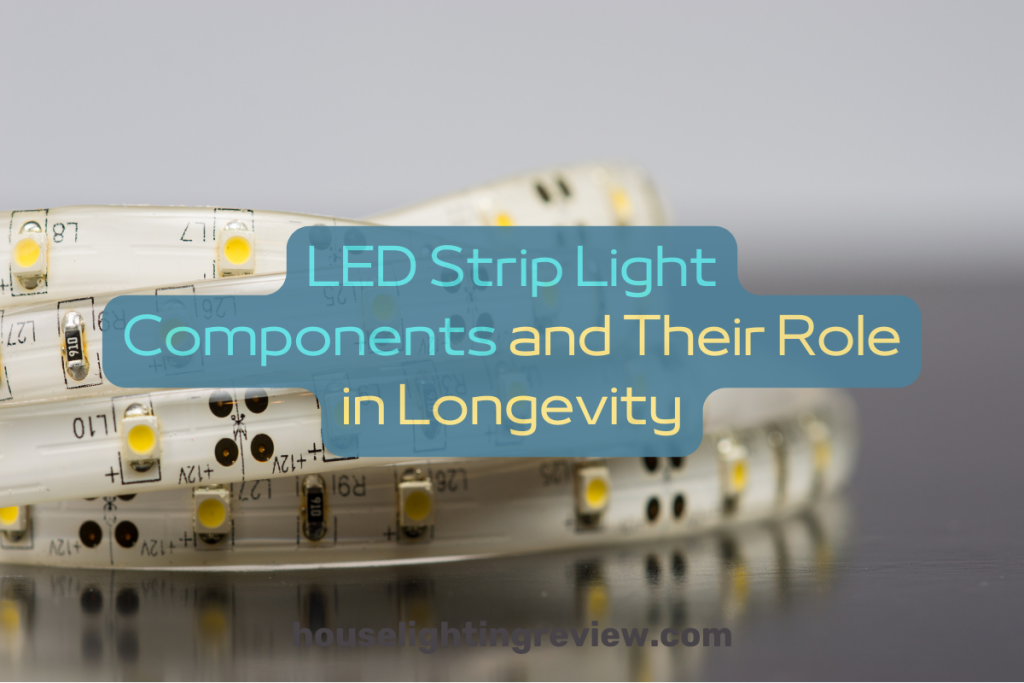
The longevity of LED strip lights is heavily influenced by the quality and performance of their components, such as diodes, resistors, and flexible printed circuit boards (FPCB). Investing in high-quality components can significantly extend the life of your LED strip lights.
Running LED strip lights at high drive currents without proper heat management can result in premature failure of the bulbs or even complete system breakdowns, unlike incandescent lights that generate more heat.
Higher drive currents can make LED bulbs, including LED strip lights, brighter, but they also generate more heat, which can reduce the lifespan of the LEDs and the system as a whole if not properly managed.
Understanding the impact of heat on the performance and lifespan of LEDs is crucial in making informed decisions about the components and installation techniques for your LED strip lights.
Diodes and Heat Management
Diodes serve a pivotal function in managing heat for LED strip lights. Efficient thermal management or the use of a heat sink plays a critical role in lengthening the lifespan of LED light bulbs, including LED strip lights. Investing in high-quality diodes with proper heat sinks can help maximize the longevity of your LED strip lights by efficiently managing the heat generated by the lights.
A heat sink serves to:
- Absorb any extra thermal energy generated by the LED chips
- Dissipate the thermal energy into the surrounding area
- Maintain low operating temperatures
- Guarantee consistent light output and color quality over time
Ensuring that your LED strip lights have proper heat sinks and diodes can significantly extend their life and maintain their brightness and performance.
Resistors and Current Regulation
Resistors have a significant role in controlling the current flow in LED strip lights. Using high-quality resistors can prevent overpowering and decrease the risk of premature failure in your LED strip lights. Overpowering LED strip lights can initially result in brighter lighting, but the lights will not last long and may pose a hazard if installed on combustible materials.
Maintaining current levels at their optimal state is necessary to optimize the lifespan of LED strip lights. This will also ensure that their performance remains at its best. High-quality resistors help regulate the voltage and current of the LED strip lights, preventing them from burning out prematurely and ensuring a longer life for your lighting investment.
Flexible Printed Circuit Boards (FPCB)
Flexible Printed Circuit Boards (FPCB), thin, lightweight, and flexible circuits, are used to interconnect components in LED strip lights. FPCB effectively dissipates heat away from LED strip lights, thus providing an increased lifespan.
Using high-quality materials such as copper, polyimide, and polyester for FPCB fabrication is recommended to ensure optimal performance and longevity of your LED strip lights.
Attaching FPCB to aluminum profiles is best achieved through the use of adhesive tape or screws. This helps ensure that the LED strip lights remain firmly in place and are not affected by vibration or other external forces. Properly mounted FPCB can further contribute to the heat dissipation and longevity of your LED strip lights.
Installation and Maintenance Practices for Longer-Lasting LED Strips
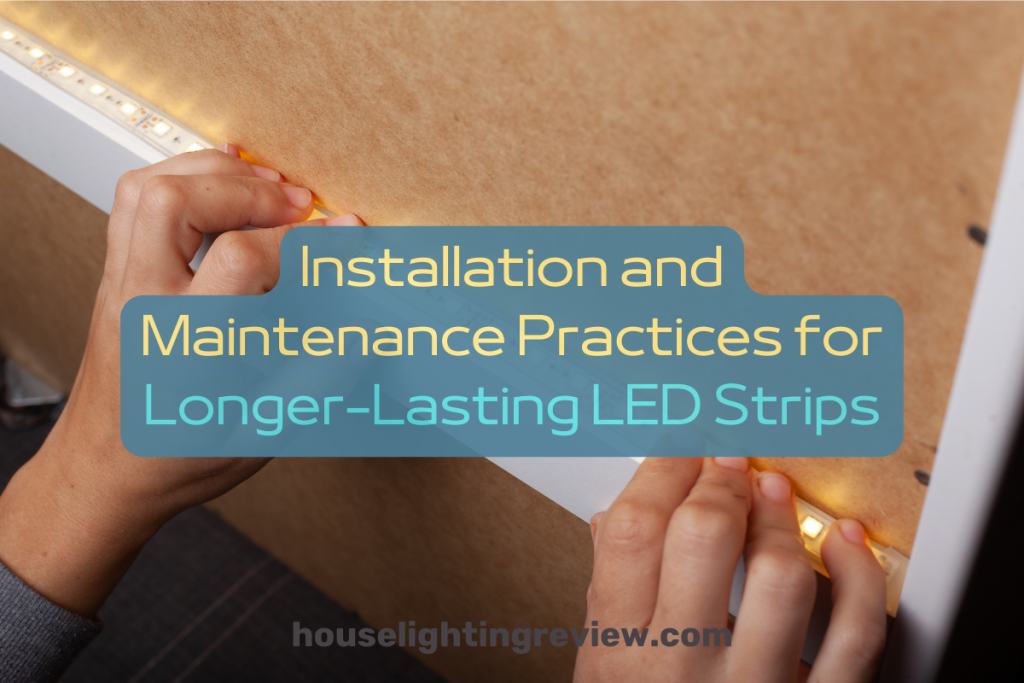
Appropriate installation and maintenance practices can notably enhance the lifespan of your LED strip lights. Utilizing correct installation techniques, such as ensuring adequate ventilation and clearance, can help prevent overheating and prolong the life of your LED strip lights.
Consistent maintenance and inspection of your LED strip lights can aid in early detection and resolution of potential issues before they inflict damage or shorten the lifespan of the lights.
When installing and maintaining LED strip lights, environmental factors like temperature and humidity must be considered to guarantee optimal performance and durability.
By taking these factors into account and implementing best practices for installation and maintenance, you can make the most of your LED strip lights and enjoy their many benefits for years to come.
Proper Installation Techniques
Proper installation techniques, like ensuring the right voltage, using the appropriate power supply, and avoiding excessive bending, play a key role in prolonging the lifespan of LED strip lights.
It is also important to provide adequate ventilation and clearance when installing LED strip lights in order to prevent overheating and extend their lifespan.
When installing LED strip lights, it is essential to use the appropriate power supply and voltage in order to prevent overheating and extend the life of the lights. Following these proper installation techniques can help ensure that your LED strip lights function optimally and last as long as possible.
Regular Maintenance and Inspection
Consistent maintenance and inspection of your LED strip lights can aid in early detection and resolution of potential issues before they inflict damage or shorten the lifespan of the lights. Inspecting the LED strip lights for signs of wear and tear, such as discoloration, flickering, or dimming, can help to identify potential issues.
Addressing these issues by replacing damaged components, cleaning the LED strip lights, and ensuring proper power supply and voltage can help prolong the life of your LED strip lights.
Implementing a consistent maintenance schedule and inspecting your LED strip lights regularly can significantly extend their life and maintain their brightness and performance. By taking a proactive approach to maintenance and inspection, you can ensure that your LED strip lights remain in top condition for as long as possible.
Environmental Considerations
Environmental factors like temperature and humidity can greatly influence the lifespan of LED strip lights. It is important to consider these factors when installing and maintaining your LED strip lights in order to ensure optimal performance and longevity. For example, LED strip lights may be subject to overheating in extreme environmental conditions.
To mitigate the effects of environmental factors on your LED strip lights, it is essential to choose the appropriate lighting solutions for your specific needs and environment. For instance, you can:
- Select LED strip lights with higher resistance to temperature fluctuations and moisture to help prolong their life in challenging conditions.
- Ensure proper ventilation and airflow around the lights to prevent overheating.
- Use waterproof or water-resistant LED strip lights for outdoor or humid environments.
- Install a protective cover or housing for the lights in areas prone to dust or debris.
- Regularly clean and maintain the lights to remove any buildup of dirt or grime.
By considering these environmental factors and making informed choices, you can ensure that your LED strip lights last as long as possible and maintain their performance.
Power Supply and Voltage: Key Factors in LED Strip Light Longevity
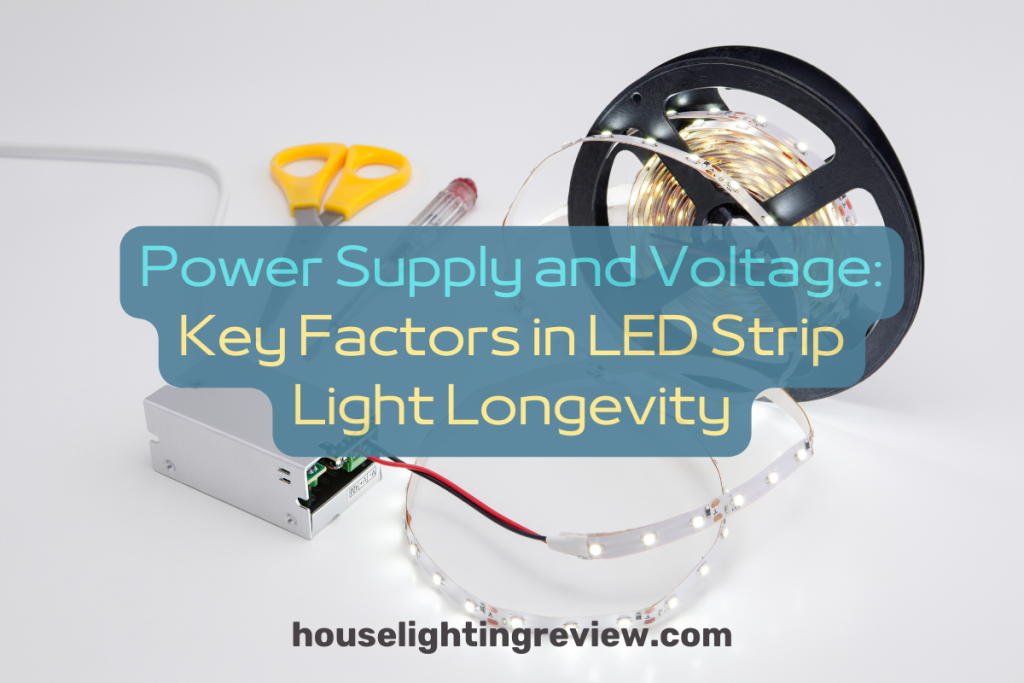
The quality of power supply and voltage levels significantly contribute to the lifespan of LED strip lights. Here are some recommendations to ensure the longevity of your LED strip lights:
- Use a stable and high-quality power supply to prevent fluctuations in power that can damage the lights.
- Consider using 24V strip lights instead of the standard 12V for better performance.
- Make sure that the power capacity of your LED strips does not exceed 80% of the rated maximum capacity of the power supply.
Following these recommendations will help extend the lifespan of your LED strip lights.
By investing in a quality power supply and maintaining appropriate voltage levels, you can significantly extend the life of your LED strip lights. Ensuring that your LED strip lights receive a stable and consistent power supply can help maintain their brightness and performance while preventing premature failure.
Quality Power Supply
A superior power supply is vital for the durability of LED strip lights, as power fluctuations can damage the lights and shorten their lifespan. Unstable power supplies can significantly reduce the life expectancy of LED strip lights, making it essential to invest in a reliable, high-quality power supply for your lighting needs.
Maintaining a consistent power supply is essential for a smooth and flicker-free operation of your LED strip lights. Keeping the power supply in a cool, dry, and dust-free environment can help prolong its lifespan and ensure the optimal performance of your LED strip lights.
Voltage Drop and Its Effects
Voltage drop is a term used to describe the reduction in voltage that occurs when electricity traverses through a conductor like a wire. This phenomenon can cause LED strip lights to operate at a lower voltage than intended, leading to a decrease in brightness and performance.
To maintain a steady voltage and prevent voltage drop, it is essential to invest in higher-end LED strip lights with more copper and the appropriate voltage levels.
Utilizing a quality power supply can also help reduce voltage drop and ensure that your LED strip lights receive the proper voltage for optimal performance and longevity.
By taking steps to minimize voltage drop, such as using wires of increased thickness, limiting the length of the run, and selecting high-end LED strip lights, you can prolong the life of your LED strip lights and maintain their brightness and performance.
Making the Most of Your LED Strip Lights: Tips for Extended Lifespan
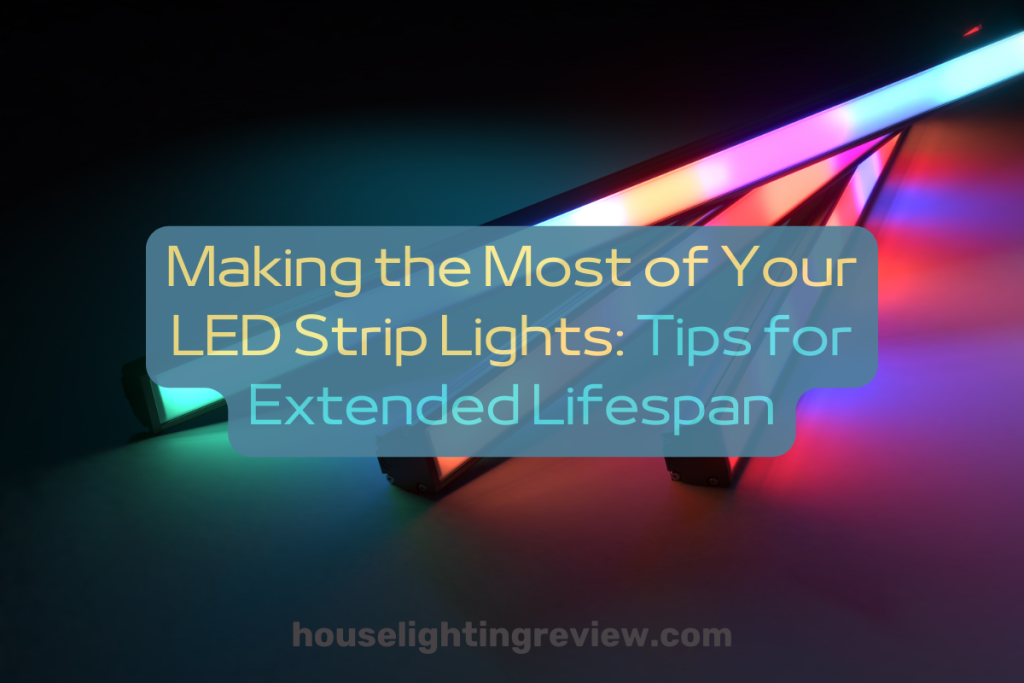
Adopting specific strategies and best practices can aid in extending the lifespan of your LED strip lights. By employing encapsulation technology, controlling temperature and heat dissipation, and adjusting usage patterns and frequency, you can maximize the lifespan of your LED strip lights and enjoy their many benefits for years to come.
Whether you’re using LED strip lights for decorative lighting, mood lighting, task lighting, or outdoor lighting, following these tips and best practices can ensure that your LED strip lights remain bright, functional, and long-lasting. By taking a proactive approach and making informed decisions, you can make the most of your LED strip lights and ensure that they last as long as possible.
Encapsulation Technology
Encapsulation technology, which involves encasing LED strips in a protective shell, assists in protecting the lights from environmental factors, thus extending their lifespan. This technology has a wide range of applications, including drug delivery, food industry, and protection of materials from external factors.
In LED strip lights, encapsulation technology helps safeguard the lights from detrimental environmental elements, including dust, moisture, and temperature fluctuations, thereby prolonging the lifespan of the lights.
By investing in LED strip lights with encapsulation technology, you can ensure that your led light strip remains protected from environmental factors that can otherwise reduce their lifespan. This added layer of protection can help maintain the brightness and performance of your led strip lights leds and extend their life.
Temperature Control and Heat Dissipation
Efficient techniques for temperature control and heat dissipation, including the use of aluminum profiles or fans, can mitigate overheating and prolong LED strip lights’ lifespan. Temperature control is essential for LED strip lights to function optimally and last longer, as high temperatures can reduce light output and cause premature failure of the LEDs.
Implementing proper temperature control and heat dissipation techniques can significantly extend the life of your LED strip lights by preventing overheating and ensuring that your lights remain bright and functional throughout their lifespan. By investing in appropriate heat management solutions, you can make the most of your LED strip lights and enjoy their many benefits for years to come.
Usage Patterns and Frequency

Modifying usage patterns and frequency can aid in preserving the brightness and functionality of LED strip lights. Here are some tips:
- Turn off lights when they are not in use.
- Avoid continuous use without breaks.
- Use LED strip lights in moderation and not for extended periods of time.
- Give the lights a rest after a few hours of use.
By following these tips, you can help prolong the lifespan of your led light strips and LED strip lights.
By taking these measures and being mindful of your usage patterns and frequency, you can ensure that your LED strip lights remain bright and functional for as long as possible. Maintaining a balance between use and rest can help prolong the life of your LED strip lights and keep them shining brightly for years to come.
Summary
In conclusion, LED strip lights offer incredible versatility, energy efficiency, and longevity. By understanding the factors that can influence their lifespan and implementing proper installation techniques, maintenance practices, and temperature control strategies, you can ensure that your LED strip lights last as long as possible and maintain their brightness and performance.
With a proactive approach and the right knowledge, you can make the most of your LED strip lights and enjoy their many benefits for years to come.
Frequently Asked Questions
Why do LED strip lights burn out?
LED strip lights burn out due to electricity wastage and temperature changes, so it is important to always turn them off when not in use and avoid extreme temperatures for longer life.
Can you leave LED strips on 24 7?
LED strips can be safely left on 24/7 as they produce a minimal amount of heat, have a longer service life and are durable. On average, LED bulbs last between 35,000 and 50,000 hours.
When should I replace my LED strip lights?
Given their average lifespan of 50,000 hours, you can expect six years of continuous use from your LED strip lights if you maintain them properly.
What are the cons of LED strip lights?
LED strip lights can depreciate in brightness, be initially more expensive than other lighting options, and have subtle light differences.
What are the key factors that can influence the longevity of LED strip lights?
Quality of components, installation techniques, power supply and environmental conditions are key factors influencing the longevity of LED strip lights.

